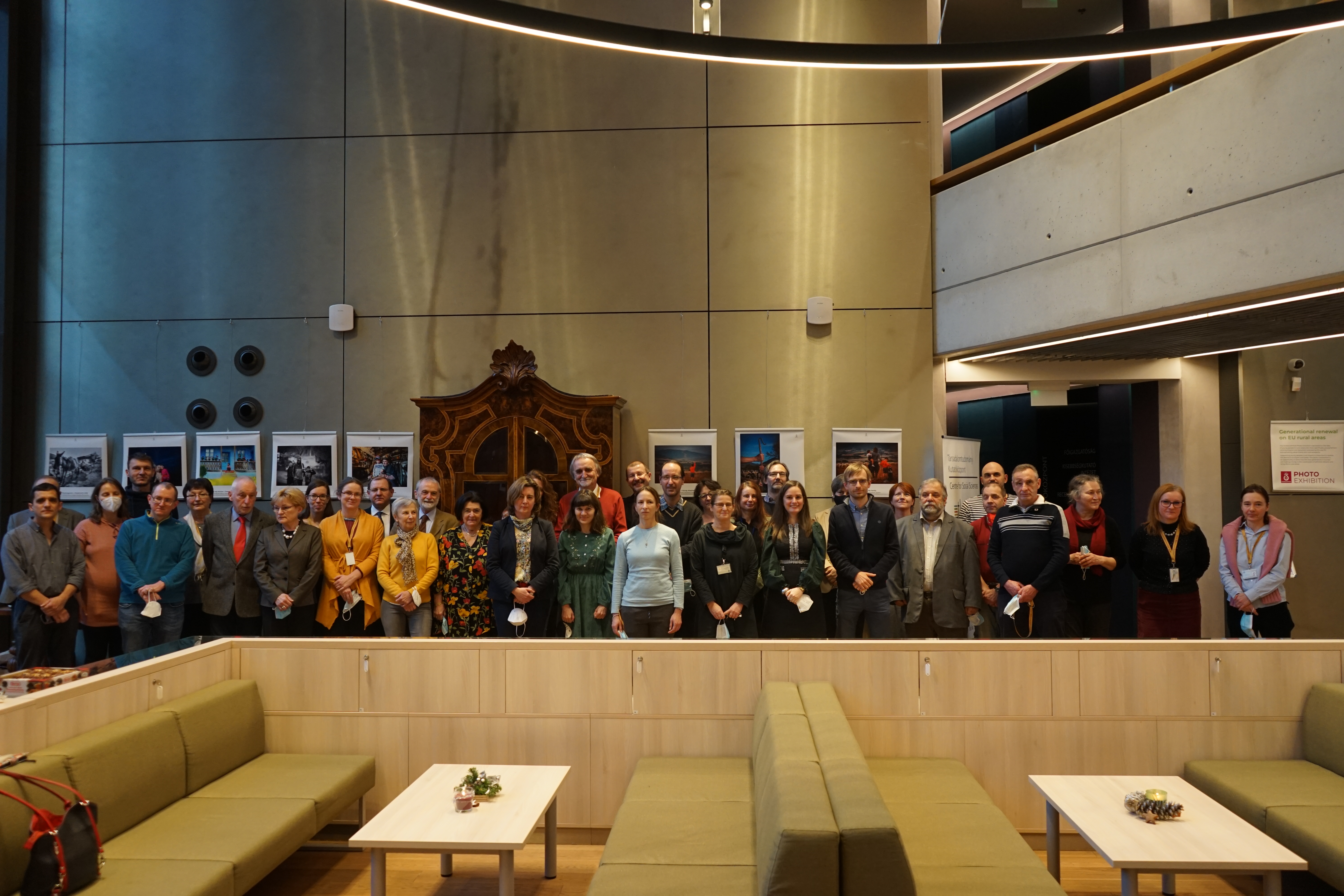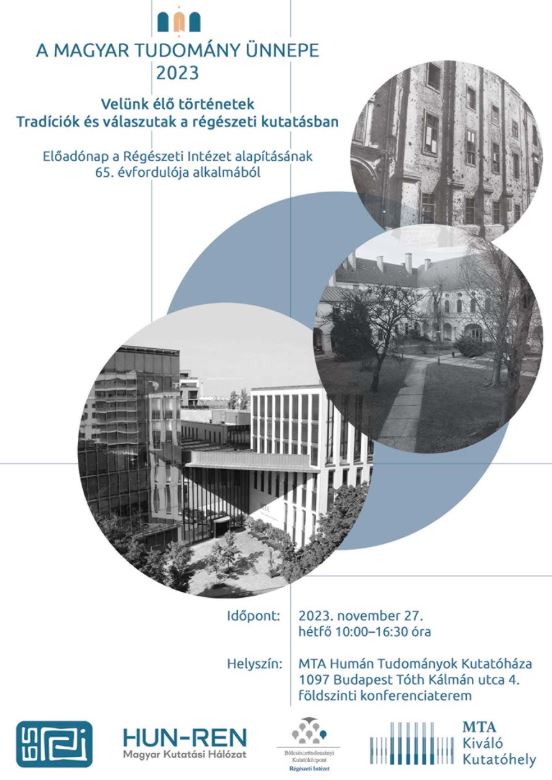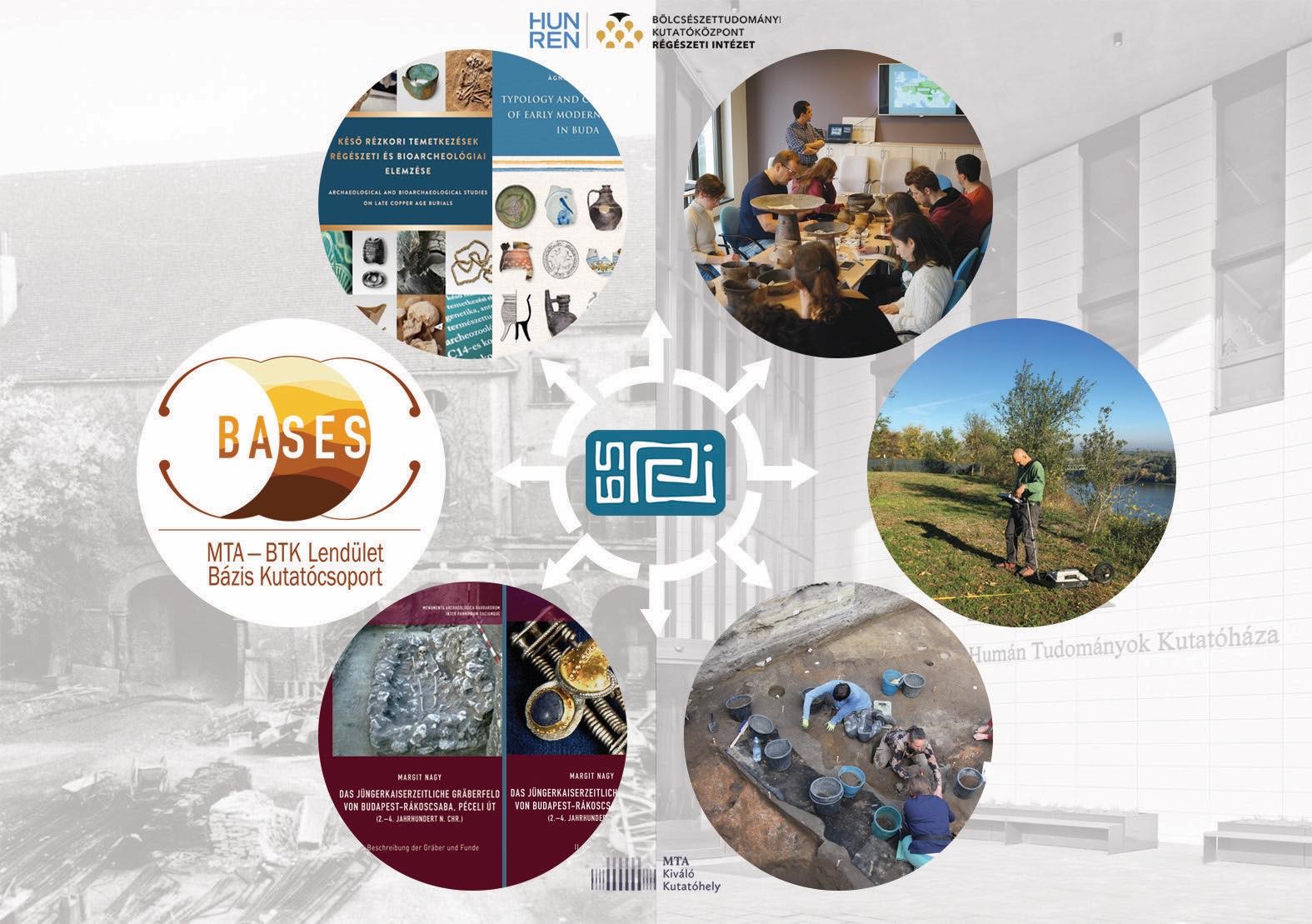
Departments
- Department of Prehistoric Archaeology
- Department of Historical Archaeology
- Department of Archaeological Methodology and Heritage Managment
- The Archive and the Library serve as public collections
Main research areas/topics
The IA’s research is currently structured around the following two major subject:
- Crises, Turning Points, and Strategies of Survival during the Past 12,000 Years — Responses to Ecological and Social Challenges Through the Millennia
- Integrating Digital Data — Research Data Repository and Developing the Digital Atlas of Archaeology in Hungary
Within these two subjects, there are five main research areas:
1. Emergence and Spread of the Early Farming Societies: The Process of Neolithisation in the Carpathian Basin (6th to 5th Millennium BC)
2. Socio-Economic Strategies of Late Copper Age and Bronze Age Societies in the Carpathian Basin (4th to 2nd Millennium BC)
3. On the Frontier of Two Worlds: Rome and the Peoples of the Great Migration
4. Centre and Hinterland: Monasteries, Castles, and Settlements in the Medieval Carpathian Basin
5. Integrating Research Resources in the Exploration of Micro- and Macro-Historical Trajectories of the Carpathian Basin
Social Impact/Public Benefit
IA researchers publish their research results in monographs, journal papers, and edited volumes both in Hungarian and in foreign languages. In addition to our monographic volumes – including both syntheses and sites monographs – the IA publishes its annual peer-reviewed journal, Antaeus, while the Hereditas Archaeologica Hungariae series delivers high-standard scientific knowledge in an accessible format for a broader audience. Being fully aware that education is a vital component of knowledge transfer, the IA’s researchers have a long-standing tradition of active involvement in higher education. Substantial efforts are also made to disseminate the new results through public lectures, exhibitions, and media appearances.
History of the Institute of Archaeology 1958–1999
The history of the Institute of Archaeology up to 1999 was written by László Török:
László Török: The Archaeological Institute of the Hungarian Academy of Sciences: The first forty-one years, 1958–1999
The 65-year-old Institute of Archaeology
 |
Read more about the 65th Anniversary Day of the Institute of Archaeology in November 2023, entitled " Living Stories — Traditions and Crossroads in Archaeological Research": Programme and summary of the Lecture Day held on the occasion of the 65th Anniversary of the founding of the Institute of Archaeology |





